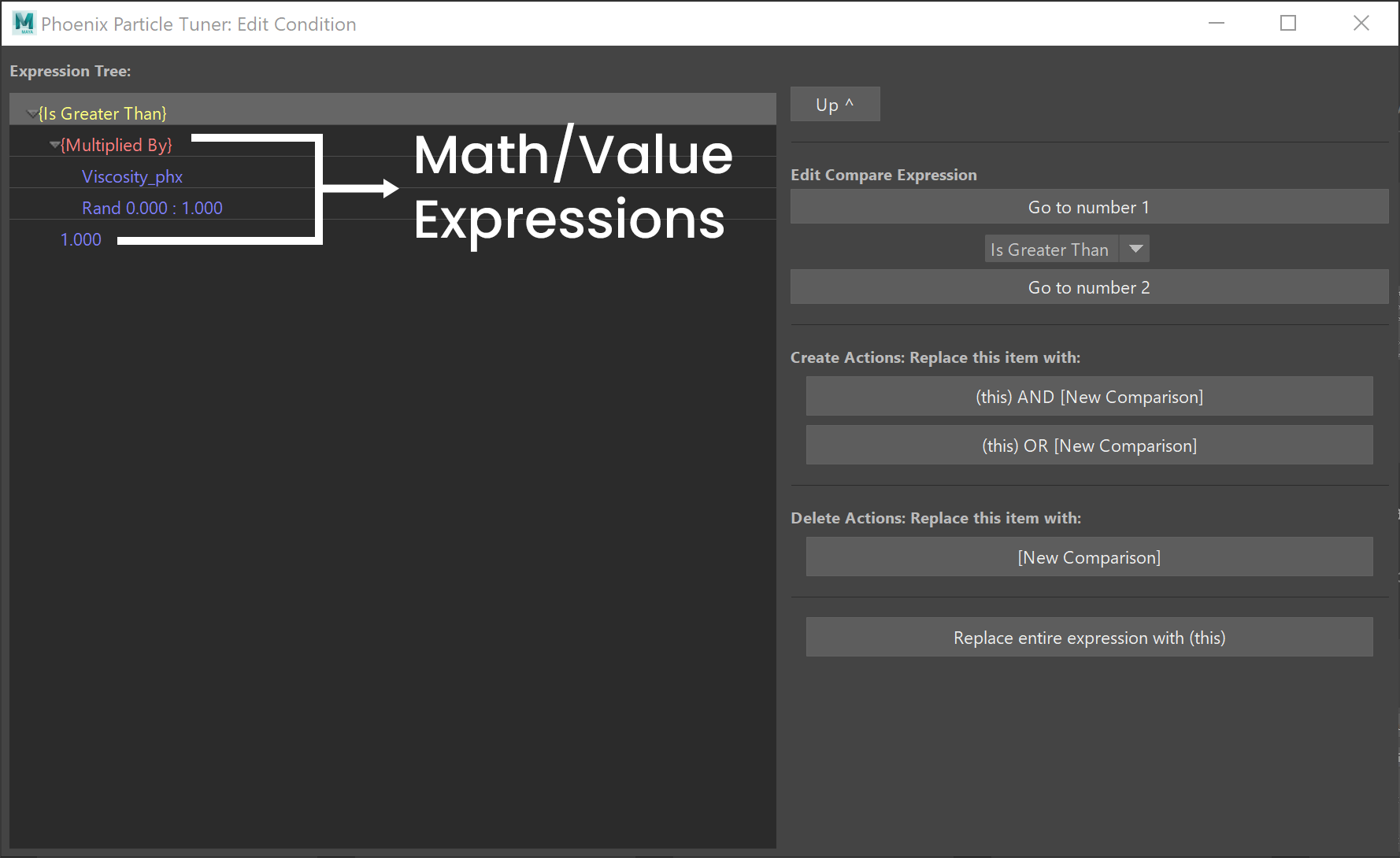Page History
...
| Section | ||||||||||||||||||||||||||||
|---|---|---|---|---|---|---|---|---|---|---|---|---|---|---|---|---|---|---|---|---|---|---|---|---|---|---|---|---|
Value Expression Item
Number | val_type, val_number – returns the specified value. Random Between | val_type, val_rand_min, val_rand_max – returns a random number in the selected range. Note: a different value is generated for each particle of the Simulator. The value also changes for every frame. Channel | val_type, val_chan_part – returns the value of the specified Simulator Particle Channel for the current particle. You must have this particle channel enabled in the Output rollout of your Simulator. The Channel can be one of: [ Size ], [ Age ], [ Viscosity ], [ RGB Red ], [ RGB Green ], [ RGB Blue ], [ Velocity X ], [ Velocity Y ], [ Velocity Z ], [ Speed ]. You can find out more about the usual grid channel ranges in Phoenix here. Distance To Mesh | val_type, val_dist_node – returns the distance from the current particle to the surface of the specified object. Will be positive if the particle is outside the object volume, and will be negative if the particle is inside the object volume. The distance is in simulation grid voxels.Note: currently you can only pick polygon meshes - measuring Distance To Particle | val_type, val_dist_to_part_list – returns the distance from the current particle to athe nearest particle from the particle systems specified in the From field. The distance is in simulation grid voxels. You can specify multiple particle systems in the From field by using commas between each one e.g. Drag,Foam,Splashes. Particles in Radius | val_num_part_in_dist_rad, val_num_part_in_dist_list – returns the particle count of the particle systems specified in the From field in a particle system is currently not supportedradius from the current particle. The radius is in simulation grid voxels. You can specify multiple particle systems in the From field by using commas between each one e.g. Drag,Foam,Splashes. Intensity Of | val_type, val_tex – returns the specified texture's color intensity in the position of the current particle. The Phoenix Simulator has no Explicit UV coordinates therefore you should add the texture as a projection (right click on a texture in the "Create Render Node" window → Create as Projection) for this to work. For more information on texture mapping in Phoenix, please check the Texture mapping, moving textures with fire/smoke/liquid, and TexUVW page. |
| Section | ||||||||||||||||||||||||||||
|---|---|---|---|---|---|---|---|---|---|---|---|---|---|---|---|---|---|---|---|---|---|---|---|---|---|---|---|---|
Compare Expression Item
Compare Type | comp_type – Sets the comparison type to perform: When set to "Is Greater Than", the Compare expression for a given particle will be true when the first Math/Value expression item should return a value larger than the second. When set to "Is Less Than", the Compare expression for a given particle will be true when the first Math/Value expression item should return a value smaller than the second. When set to "Is Equal To", the Compare expression for a given particle will be true when both Math/Value expression items evaluate to the same number. |
...



